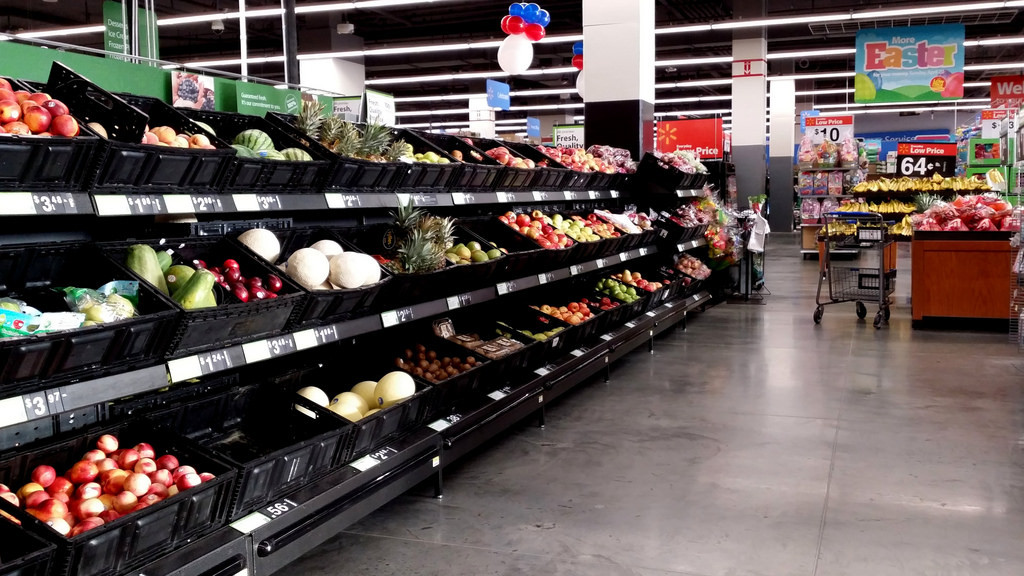You’re Not Eating Enough Fruits And Vegetables

You’re the reason this aisle is empty. Yes, you. (SchuminWeb)
Based on the results of an ongoing, random-digit phone survey the CDC conducts called the Behavioral Risk Factor Surveillance System (BRFSS), the agency says in its Morbidity and Mortality Weekly Report that between 2007 and 2010, half of the total U.S. population consumed less than a cup of fruit and under 1.5 cups of vegetables daily. More specifically, 76% didn’t eat enough fruit and 87% skimped on the vegetables.
Federal guidelines suggest that adults who engage in under 30 minutes of moderate physical activity daily should consume 1.5–2.0 cup equivalents of fruit and 2–3 cups of vegetables daily, the CDC points out.
The CDC notes that it did find that while national estimates indicated we’re not eating enough fruits and veggies, there is a lot of variation from state to state.
On the low end, only 7.5% of Tennessee residents met fruit intake recommendations, with California on the other end at 17.7%. Mississippi was the lowest when it came to people getting enough vegetables to eat at 5.5%, while California once again came out on top, with 13.0% eating the recommended amount of vegetables.
With only 13.1% of total adults meeting fruit suggestions and 8.9% chomping the proper amount of veggies, the CDC’s report says it’s time to make a push to build consumer demand for these healthy foods through “competitive pricing, placement, and promotion in child care, schools, grocery stores, communities, and worksites.”
“Because fruit and vegetable consumption affects multiple health outcomes and is currently low across all states, continued efforts are needed to increase demand and consumption,” the CDC writes.
One suggestion? Get’em while they’re young: the CDC says 60% of children didn’t eat enough fruit and 93% were lacking on vegetables. Change that early on, and it could continue to affect a person’s lifestyle, the CDC surmises.
“Better dietary practices earlier in life might lead to better practices later in life, and places where children learn and play can have an integral role in improving intake,” the CDC writes, listing schools, early care and education providers as examples where providers can help boost fruit and vegetable consumption.
The adult world could also improve things, by making fruits and vegetables more accessible and promoted in grocery stores, restaurants, worksites and other places were food is offered.
Also, telling your friends and adult family members that they are not allowed to leave this table without finishing five more bites of vegetables could work. And you can forget about dessert, there are perfectly good apples in the kitchen.
Adults Meeting Fruit and Vegetable Intake Recommendations [CDC.gov]
Want more consumer news? Visit our parent organization, Consumer Reports, for the latest on scams, recalls, and other consumer issues.

